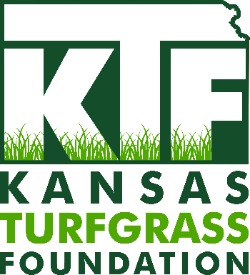Integrated Pest Management
- Why should I learn about IPM?
- OK, I'm sold on using IPM but what is it?
- How can I establish an IPM program?
Why should I learn about IPM?
There are several benefits of using turfgrass Integrated Pest Management.
- Accurate pest control is achieved. Since a problem is properly identified prior to activating a control, shotgun controls are avoided. Pesticide misuse can be minimized in this type of program.
- The potential for reduction of total pesticide usage. Pesticides are used only when absolutely necessary to maintain a desired turf quality. In areas where IPM is being practiced, savings have been realized due to decreased pesticide application.
- IPM produces the healthiest turfgrass possible for a given set of growing conditions, and healthy turf always has better quality than stressed turf.
Many homeowners are frustrated in their attempt to produce the “perfect” lawn. Little do they realize that cultivating and maintaining the “perfect” home lawn is an unrealistic goal. The average lawn of 5,000 square feet contains approximately four million turfgrass plants. Each of these individual plants changes morphologically and physiologically during a season as it progresses through a normal growth cycle. There is also constant and ongoing change in the growth environment, including changes in soil, temperature, moisture availability, light, and pest populations. The interactions of the individual grass plants with the total environment result in constantly changing lawn conditions. Some interactions favor healthy grass plants and a quality lawn appearance; others result in stressed turfgrasses and a less attractive appearance. Under the best conditions, a quality lawn is difficult to sustain for long periods.
Poor turf care can create additional problems. Often, turf care begins with inappropriate establishment techniques and is followed by cultural activities that result in turfgrass stress. Turf mismanagement, when combined with the changes in turfgrasses and growth environments, creates a situation in which quality turf is almost impossible to maintain. Frequently, pesticides are used as “Band-Aids” to solve problems created by mismanagement, and environmental and growth changes.
Pesticide use on home lawns is widespread. In many cases pesticides are broadcast over entire home lawns, even though weed or insect populations are small or localized. Misuse of pesticides is obviously undesirable and can result in unnecessary health risks for living organisms in the treatment area. Misuse can allow pest organisms to develop resistance to a pesticide, rendering it useless when it really may be needed. Pesticide misuse can also be extravagant, wasting precious time and financial resources.
OK, I'm sold on using IPM but what is it?
The overall goal of turfgrass management should be to produce healthy turf. Healthy turf will produce the best possible quality lawn under a given set of growing conditions. In addition, healthy turf is usually less reliant on pesticides to achieve a desired quality. One method of producing the healthiest turf possible is to practice Integrated Pest Management (IPM).
A good IPM definition comes from Dr. Vic Gibeault and others from the University of California, Riverside. They defined IPM as "multiple tactics used in a compatible manner in order to maintain pest populations below levels that cause economic or unacceptable aesthetic injury without posing a hazard to humans, domestic animals, or other non-target life forms."
IPM combines all available pest management methods to produce the healthiest lawn possible. It does not aim to totally eliminate pests, but to maintain pest populations at tolerable levels. Pesticides are often part of an IPM program, but are selected and applied responsibly to avoid health risks to other living organisms than those targeted.
How can I establish an IPM program?
The four main IPM steps are:
- Scout or monitor the turf regularly (1 to 2 times a month)
- Establish an aesthetic threshold for various pests
- Identify and apply appropriate pest management control practices
- Keep track of results for reference and predicting future problems
Scouting
The key to any successful IPM program is knowledge. Turf managers need to understand life cycles of turfgrasses and pests, as well as their responses to cultural and chemical inputs. When turf knowledge is used to monitor growing conditions, set pest control thresholds, and make sound turf management decisions, an Integrated Pest Management program begins to take shape
Aesthetic Threshold
A major emphasis in a turfgrass IPM program is determining the point at which action to reduce pest problems is taken (economic or aesthetic threshold). Perceived turf quality is subjective and personal; depending on the site and turf use, different managers will tolerate different levels of quality. Each manager decides when a turf's quality has declined to the point that actions should be taken to restore the desired quality. Turf health needs to be monitored regularly for the presence of problems. As problems develop, their causes must be determined and corrective measures evaluated. When problem solving in IPM, all management practices are considered along with the effects that each will have on the pests and other organisms in the area.
Pest management control practices
- soil management
- turfgrass selection
- altering the growing environment
- appropriate cultural practices
- biological and genetic controls
- physical or mechanical removal
- exclusion through prevention and sanitation
- pesticides
In IPM, a lawn manager selects or combines appropriate methods to maintain lawn health as environmental conditions allow.
Soil management
Proper soil management is important; healthy lawns have healthy root systems. Many turf problems can be traced to soils that are excessively wet, dry, acidic, or alkaline, and to soils that are infertile, prone to compaction, impenetrable, or full of debris. Fertile soils with a pH of between 6 and 7 are desirable. Many home lawns suffer because grasses are grown on soils that are poorly drained. Healthy lawns usually grow on soils that have adequate water and oxygen.
The best time to make major soil modifications is at establishment. Begin by taking soil samples for a soil test. A properly prepared planting bed meets the growth demands of a turf. Incorporate amendments based on soil test recommendations to provide the best possible turfgrass growing conditions.
Even established turfs will benefit from a soil test. Major changes, however, are not often possible because of potential turfgrass damage. Modifications to soils in which established turf is growing can be accomplished by supplying amendments in small increments.
Turfgrass selection
When establishing or renovating a lawn, carefully select turfgrasses based on use, growth environment (e.g., soil type, light availability, moisture availability), the desired appearance, the management level the turf will receive, and the grasses' pest resistance. Turfgrass cultivars (also referred to as varieties) are types of a grass species selected for specific characteristics such as disease resistance, tolerance of unusual environments, or appearance, and should be used whenever quality turf is desired. To reduce overall turfgrass disease potential and provide tolerance to varied sites, plant mixes (combinations of two or more species of turfgrass) and/or blends (combinations of two or more cultivars of the same species).
Altering the growing environment
Sometimes, lawns are easily improved by altering the growing environment. Pruning trees to allow more light to reach turf, cultivating soils to improve aeration and compaction, or regrading a site to improve surface drainage are methods of altering the growing environment and developing a healthier turf.
Cultural practices
Proper lawn care is probably the most useful IPM method for managing pests and controlling appearance. Mowing, watering, fertilizing, and cultivating can be combined to reduce weed, insect, and disease problems and to produce turf of high quality.
Biological and genetic controls
Advances in turfgrass breeding and pest control research present some exciting and potentially useful methods of pest control. Presently, however, disease-resistant turfgrass cultivars present the most useful application of this technology.
Biological control includes the use of bacteria, fungi, nematodes, and parasitic or predaceous insects to control pest organisms. An example of this type of control is the use of milky spore (a bacteria) to control Japanese beetle grubs. Milky spore, unfortunately, is not effective against most common grubs that invade turf in the north central region.
Currently, researchers are evaluating many biological controls. Nematodes used for grub control, diseases and insects for weed control, and bacteria and fungi for lawn disease control are receiving attention and may be available for general lawn use in the future. These products cannot be endorsed until university research conclusively proves their worth.
Some cultivars of perennial ryegrass and tall fescue have been found to be associated with fungi (endophytes) that sod webworms, chinch bugs, and billbugs find as an undesirable food source. Endophytes are present in turf seed of certain cultivars and are passed along from generation to generation. Use fresh seed that has been properly stored; survival of the endophyte fungi is dependent on proper seed storage conditions.
Genetic control involves the use of disease-resistant turfgrass cultivars and currently provides an important avenue for reducing disease problems in home lawns.
Physical or mechanical removal
In turf, mechanical removal of pests entails removal by hand. Small populations of weeds can be controlled by pulling, digging, or hoeing. For large weed populations physical removal is laborious, time consuming, and often impractical.
Physical removal of insect or disease pests is generally not practiced in turfgrass areas.
Prevention and sanitation
When planting a lawn, it is important to use seed or vegetative propagules (sod, plugs, or sprigs) that are as pest free as possible. Inspect seed labels or vegetative propagules to determine if weeds or pests are present. Select and plant pest-free turfgrasses, and use weed-free soils when altering landscape areas. Obviously, planting a pest-free lawn will minimize future problems.
Collect clippings in established turf when weeds are in flower to reduce seed spread. Collecting clippings will also reduce the spread of diseases during periods of infection.
Reducing pest spread from areas adjacent to established turf can also help prevent pest infestations. Mowing weeds in those areas prior to flowering can reduce seed movement into turf areas.
Pesticides
Contrary to some beliefs, pesticides are often part of an IPM program. They are selected and applied responsibly to avoid health risks to living organisms other than those targeted. Pesticides are used as a last-resort control based on the need to maintain a pest population below the predetermined aesthetic or economic threshold in IPM.
Pesticides are selected based on:
- application method and timing
- toxicity
- effectiveness
- host specificity
- cost
- persistence
Pesticides can be used to control weeds, insects, and diseases in turfgrass. Generally, pesticides that have low toxicity, are effective against the pest that is present (but not damaging to other living organisms), and have the least persistence should be selected. Using the most effective application methods and timing can reduce the impact of selecting a costly pesticide product. Avoid using highly toxic, persistent, broad-spectrum pesticides. The use of preventive pesticides on a home lawn is limited to situations where regular pest invasions are guaranteed. To reduce the amount of pesticides applied, make spot applications only to areas where pests are a problem rather than broadcast applications to an entire lawn. If pesticides are used, be sure to read, understand, and follow the label directions for the safest and most effective use.



